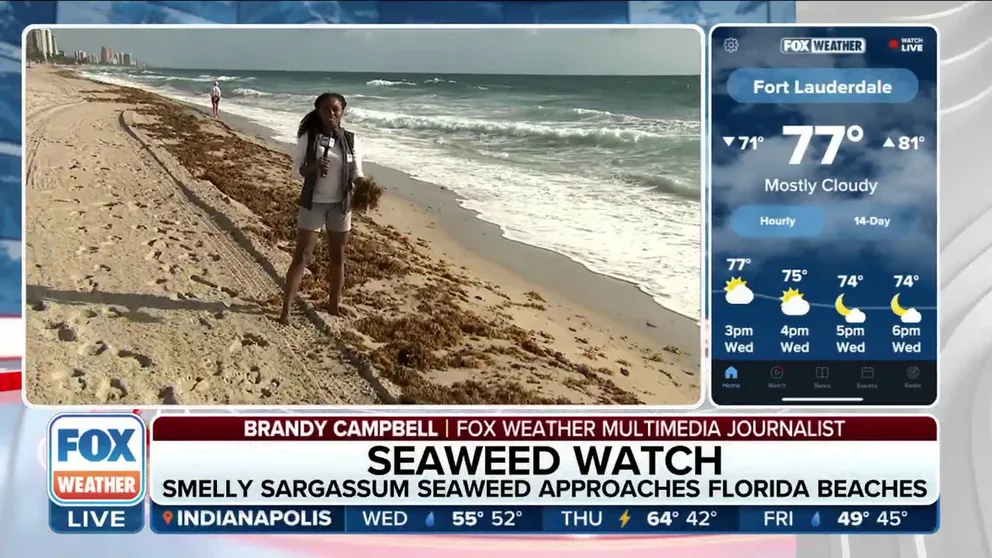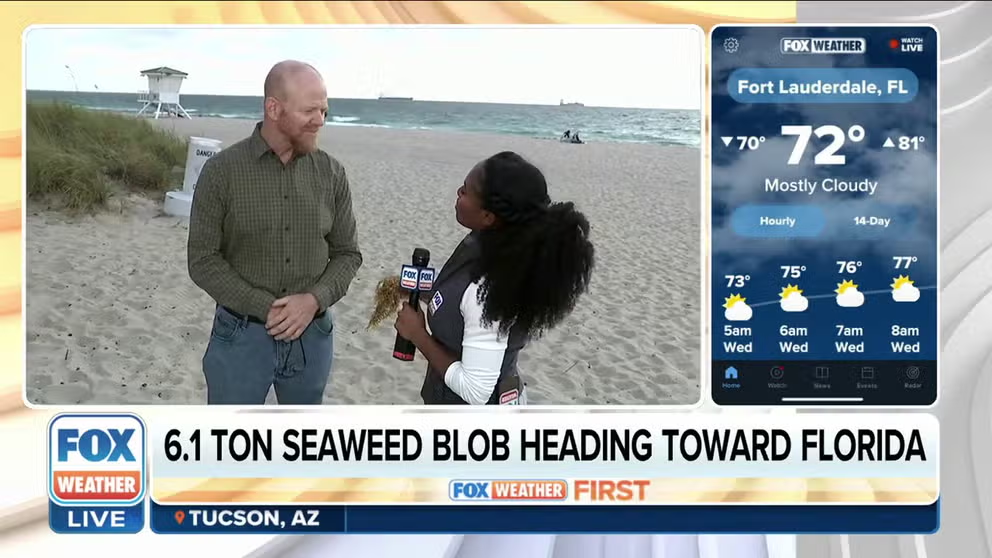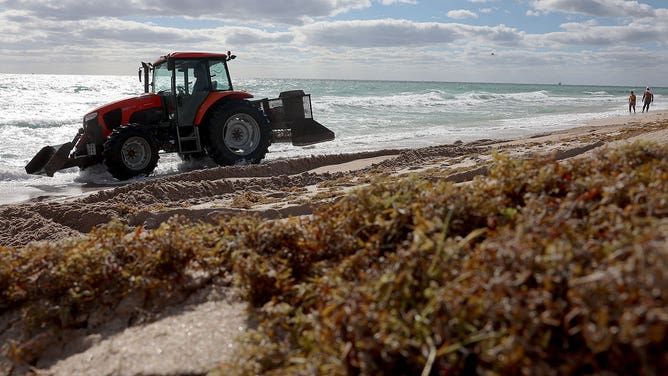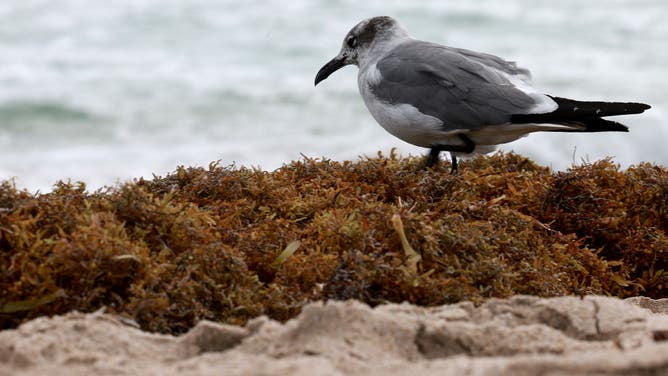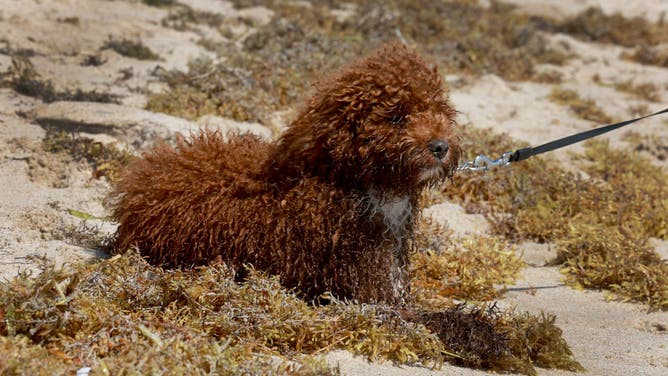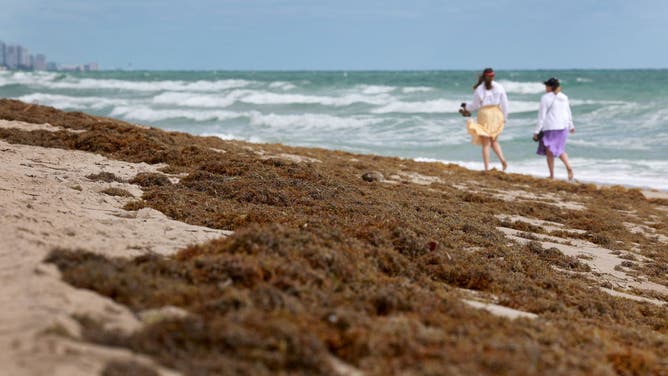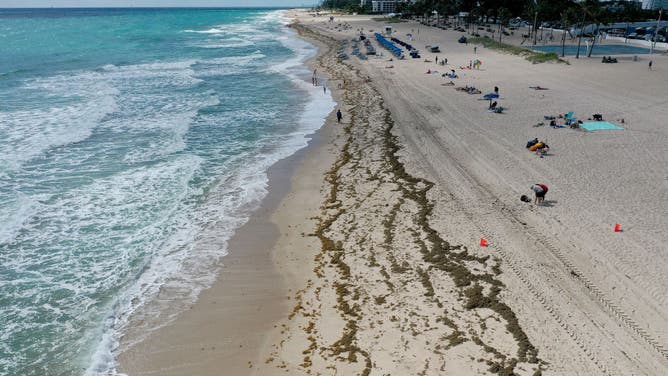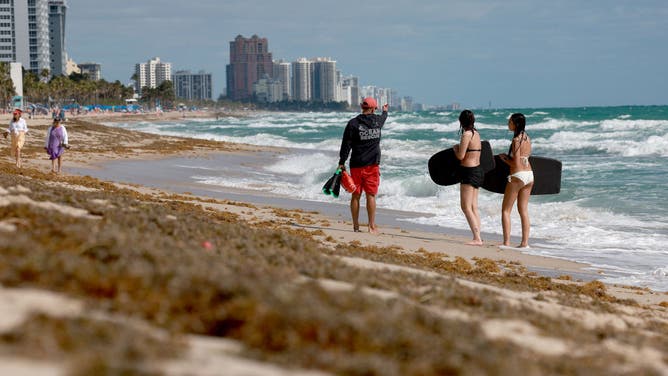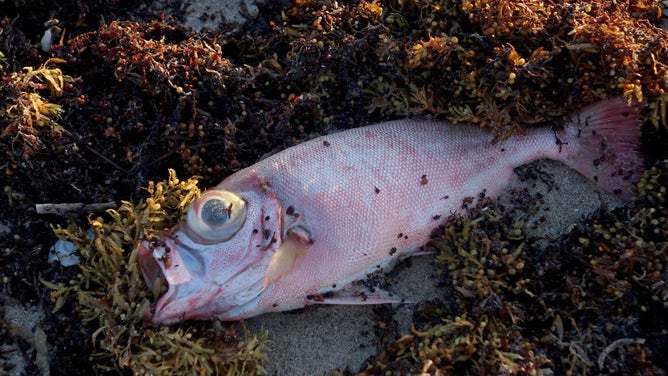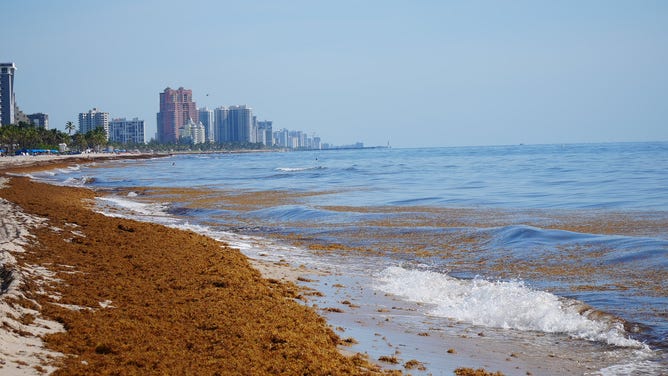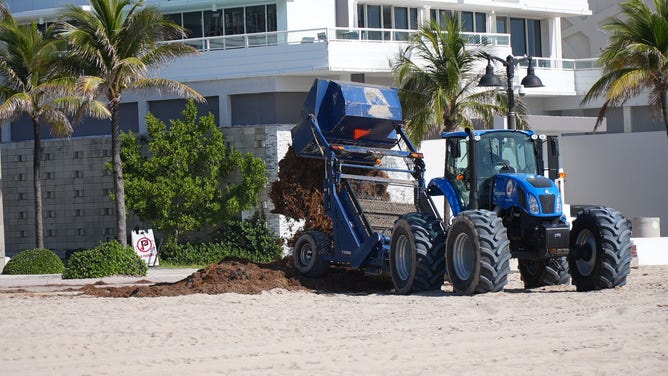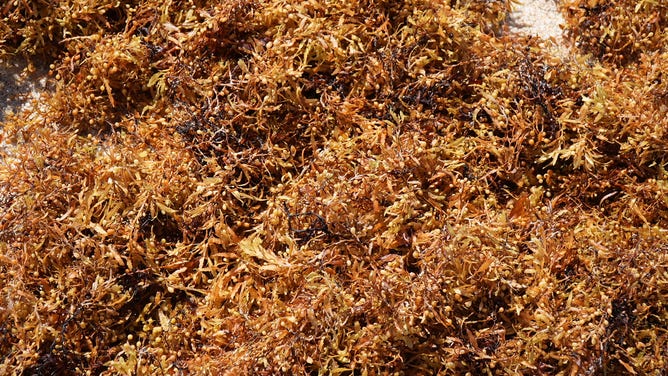Plague of massive seaweed blobs force daily cleaning of Florida beaches during spring break
The Great Atlantic Sargassum Belt is currently about 5,000 miles long, with some of the floating brown algae headed for Florida beaches. It’s already popping up in the Florida Keys and on beaches along the coast.
Smelly sargassum seaweed approaching Florida beaches
Massive seaweed blobs are plaguing Florida beaches for spring break and require daily cleaning. FOX Weather's Brandy Campbell has the latest from Fort Lauderdale, Florida.
FORT LAUDERDALE, Fla. – Giant blobs of sargassum seaweed in the Atlantic Ocean between the coast of Africa and some in the Gulf of Mexico are placing Florida beachgoers on alert.
The Great Atlantic Sargassum Belt is currently about 5,000 miles long with some of the floating brown algae headed for Florida beaches. It’s already popping up in the Florida Keys and beaches along the coast.
MASSIVE SEAWEED BLOOM STARTS WASHING ASHORE ON FLORIDA BEACHES
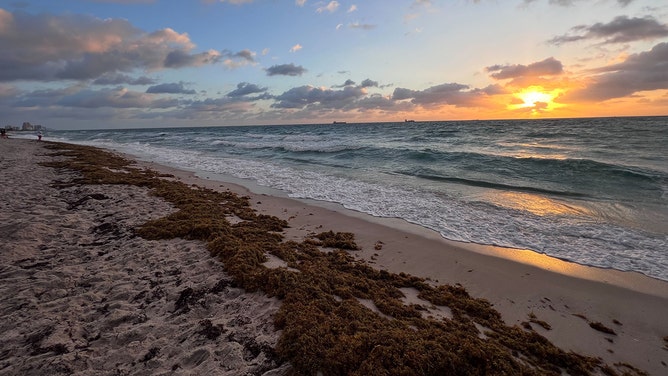
Reports from Key West, Fort Lauderdale and other South Florida communities show clumps of brown seaweed piled up along what are usually white, sandy beaches.
(Brandy Campbell / FOX Weather)
'We're not expecting it to taper off'
Scientists have been tracking the belt for months before it started to wash ashore in the Sunshine State, and experts are warning that the worst could still be ahead.
Mark Almy with the city of Fort Lauderdale leads the teams responsible for cleaning it up day after day. Fort Lauderdale is the only city permitted to collect the seaweed and compost it to make dirt.
"We are out every single day," he said.
Almy said they have seen about three times as much seaweed accumulate this year. As of last Saturday, crews picked up 650 yards of seaweed in the city. At that point last year, they’d only gathered 206 yards.
"It's early. It could taper off, but we're not expecting it to taper off with that expectation," he said.
FROM SEAWEED TO SOIL: SOUTH FLORIDA BEACH TOWN FINDS A SOLUTION TO A STINKY PROBLEM
Florida beaches cleaning up massive seaweed bloom daily
Parts of Florida are bracing for a 6.1 ton belt that includes several blobs of seaweed that smells like rotten eggs to wash into the area as it makes its way across the Atlantic. FOX Weather's Brandy Campbell reports from Fort Lauderdale, Florida.
Over the past 15 years, Almy said crews have been trucking it off to one of their major city parks, where it will eventually be composted.
Ten yards of seaweed are converted into a yard of dirt after it is composted for about 120 days. The city said they use the dirt for plantings and also supply it for residents as well.
"It is better for the environment. It saves us a lot of money, and there's no landfill space taken up," he added. "The benefit is obviously monetarily. We don't have to pay for trucking fees, and we don't have to buy dirt."

Reports from Key West, Fort Lauderdale and other South Florida communities show clumps of brown seaweed piled up along what are usually white, sandy beaches.
(Brandy Campbell / FOX Weather)
Last year was the largest bloom the state had seen since 2018, according to Brian Barnes, an assistant research professor at the University of South Florida’s College of Marine Science.
Barnes has been monitoring the seaweed and believes larger amounts should be offshore during the late spring and early summer.
"This year, we are on track to at least meet, if not surpass, the total amount seen in 2022," Barnes said.
There were some glimmers of hope for the seaweed to die down in February, Barnes continued, but it just kept on growing.
"Last year, at the peak time in June, we had about 25 million tons. And so we expect to see at least that much, if not more this year," he said.
South Florida faces growing seaweed problems
Florida faces a perfect storm of sargassum and red ride during the popular spring break.
Pros and cons: Seaweed on land or at sea
According to the Florida Health Department, the seaweed is not harmful to humans, but it can still lead to impacts. Aside from an unpleasant odor, similar to that of rotten eggs, tiny creatures living in the sargassum can produce rashes and blisters.
The release of hydrogen sulfide from the seaweed could also cause respiratory health problems once decomposed. The accumulation could cause dead zones along the coast and smother corals, seagrass and beaches.
According to a study conducted for the Florida Keys and Monroe County, a significant sargassum event could cost the heavy tourism-reliant region at least $20 million in economic losses and hundreds of local jobs.
Yet aside from possibly impacting tourism, it can make it hard for baby sea turtles to get into the water.
Health experts advise people never to eat seaweed because it also may contain large amounts of heavy metals such as arsenic and cadmium.
The good news is that seaweed provides habitat, food, and protection for marine life, as well as serving as a breeding ground for marine life. In small quantities, the seaweed could help avoid beach erosion.
According to Barnes, the peak timing for more of this algae to reach the shore could be between May and July.
The amount of sargassum seaweed that makes its way to Florida shores depends on ocean currents, wind and waves. At the end of March, the state will get an overall update on the sargassum’s progress from the University of South Florida.
